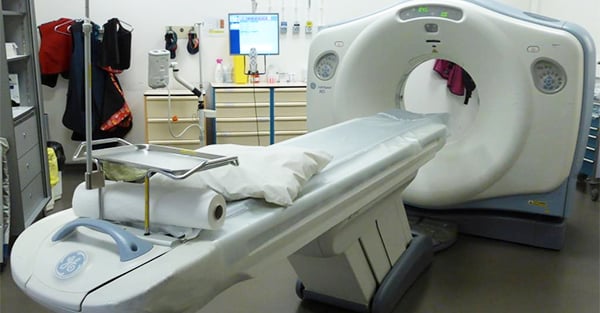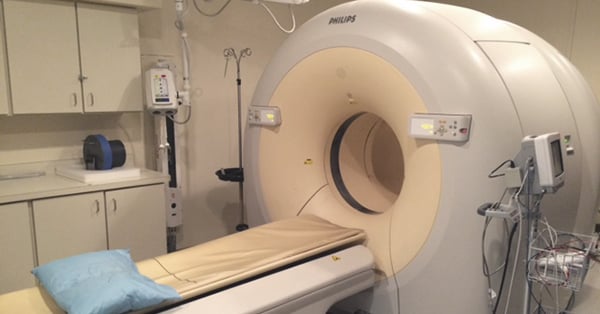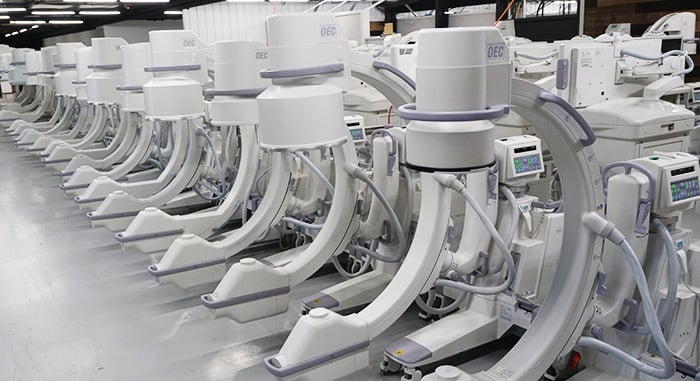
When people hit the market for a 64-slice CT scanner, the GE VCT and the Siemens Sensation are two models that are likely to come up pretty early in that initial Google search. While these models aren't that hard to find, what can be much harder is deciphering how they stack up side-by-side. They're both 64-slice scanners, with high-end features and upgrade options, from well-respected, leading manufacturers- and they fall in the same ballpark price bracket. So how do you choose?
Below are a few considerations from both the hardware/features side of things and the ownership experience that will help as you narrow down your 64-slice CT scanner options.
What's the same?
There are a number of features that these systems share, either identically, or so similarly the differences are negligible. These include:
• Gantry tilt range
• Positioning laser lights
• High-frequency generator
• Automatic mA control
• 512 x 512 reconstruction matrix
• 2D construction (basic)
What's different?
There are also a number of areas where the VCT and the Sensation differ. Considering these, pros and cons emerge that, on a case-by-case basis, might make one system a better fit than the other. Overall though, even these differences don't demonstrate a clear "frontrunner" in terms of quality or functionality.
• Tube replacement costs: The VCT's Hercules tube and the Sensation's Straton tube are, in terms of performance, sufficient for all but the most demanding sites. There is a more notable difference in the cost to replace a tube that has failed. A new Hercules from the OEM costs around $160,000. A new Straton runs around $210,000. On the secondary market, both of these tubes cost much less,depending on usage, but the Straton (80k - 120k) still falls in a higher price bracket than the Hercules (35k - 60k).
See more tube replacement costs here
• Cooling system: The VCT has an air-cooled gantry while the Sensation is water-cooled. In most cases, an air-cooled gantry is advantageous because the system has a smaller overall footprint and lower maintenance costs.
• Maximum continuous scan time: The VCT tops out at 60 seconds while the Sensation can go for up to 100. On paper, this is a big advantage for the Sensation. In the field, however, it's rare to even approach the 60-second mark.
• System footprint: The VCT, in its short-table configuration requires a minimum room size of 21.7 square meters. The long-table VCT needs 23.8. The Sensation has a comparable footprint, but has a suggested minimum of 26.43 square meters to allow space for service areas.
Other Considerations
Sometimes the decision between two comparable products is less about specifications and more about the experience of owning and using them. In the case of the VCT 64 and the Sensation 64, it's helpful to consider these non-technical points.
• Parts and support availability: If you're replacing an existing CT and it's a GE or a Siemens, it might be simplest for you to stick with the same manufacturer. Your current parts supplier will be more likely to have the parts you need, and your service personnel will have a higher degree of familiarity with the incoming equipment.
If your business is branching out into a new region, the availability of parts and service in those locations should be considered as well. Generally, for new sites in the US, GE is hard to beat for availability of engineers, support information, and parts on the secondary market. In other areas (Europe, for example) availability may be higher for Siemens.
• Preferences/the learning curve: The team that will use your system and the radiologists that may be reading your scans may have preferences. If the "boots on the ground" have a favorite, it can be well worth catering to them. User interface, control systems, report formatting- these are fine details in the user experience that can constitute a learning curve.
• Remodeling and installation: Depending on your individual project, this could be just as important as technical specifications. A lot of cost and logistics go into building or preparing the right room for the incoming equipment. If you're installing into a room that has already housed a water-cooled scanner, the Sensation 64 is a good pick. If you're tight on space, the VCT 64 has the advantage. If you're building a brand-new space- the world is your oyster, so to speak.
The Takeaway
Both the GE VCT 64 and the Siemens Sensation 64 are scanners that can serve you well. The choice to purchase one over the other will need to be made by looking at your CT project holistically, from technical capabilities to future service and component replacement. Regardless of which way your needs have you leaning, our team is ready to help. Use the button below to begin the conversation!

Jeremy Block
Jeremy Block is the Senior Vice President of Product Solutions at Block Imaging. Jeremy’s goal is to make your buying or selling experience as easy as possible. Outside of work, Jeremy enjoys Michigan State football, and spending time with his wife and kids.






